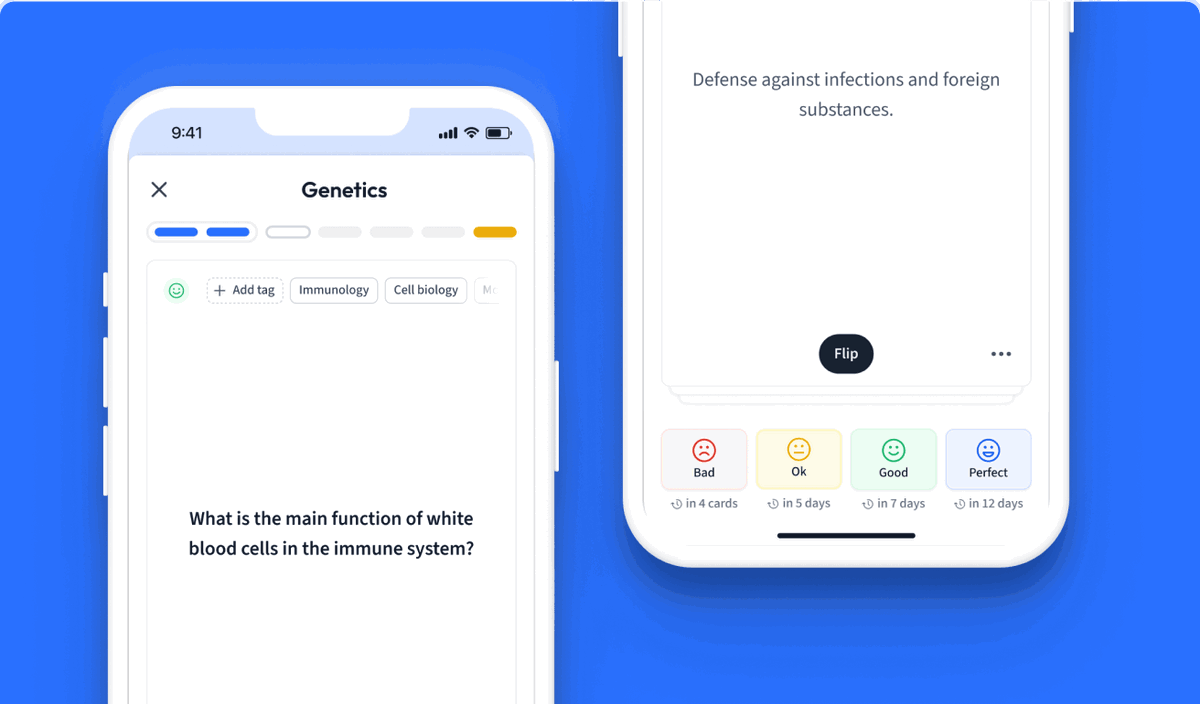 Figure 1: one of the most popular plants today is the Monstera plant. The shape of its leaves make it a beautiful decor option!
Figure 1: one of the most popular plants today is the Monstera plant. The shape of its leaves make it a beautiful decor option!
Definition of Plant leaf
Let's start by looking at the definition of a plant leaf.
A leaf is a plant organ with multiple veins (branched or unbranched) and photosynthetic tissue that grow laterally from nodes on the plant stem. Their primary function is to serve as the site of photosynthesis; however, plants have adapted leaves to serve different purposes.
Often, they are flat and thin, allowing for a larger surface area to enhance their ability to absorb light (for photosynthesis). Leaves of a plant are often green because they contain chlorophyll, a chemical important to photosynthesis.
Leaf Structure
As with anything in biology, structure and function always go together. This is why plant leaf structure varies widely: each plant's leaves are adapted to the surrounding environment.
However, there are some parts of the plant leaf that are a necessary requirement. The leaves of a plant are an integral part of the stem system. Having vascular tissue running through them, leaves on plants play a role in the free exchange of nutrients, water, and end products of photosynthesis. For instance, when sugars are produced, they will be transported via the phloem veins from the leaves (the source) to the parts of the plant that cannot produce their own food (the sinks). Additionally, plants need cells with chloroplasts that can photosynthesize, and structures to allow gas exchange during that process.
 Figure 2: can you imagine being a tiny plant starting to grow and having to compete for sunlight with the tall trees that are already well-established in your neighbourhood?
Figure 2: can you imagine being a tiny plant starting to grow and having to compete for sunlight with the tall trees that are already well-established in your neighbourhood?
To optimise the balance between photosynthesis and gas exchange, each plant has a differently shaped leaf. This means that, depending on the environment, the leaves on a plant will have a particular shape to try to have a large enough surface exposed to the sun to photosynthesize as much as the plant needs while losing as little water as possible during the gas exchange process. On the other hand, water evaporation on larger leaves cools down the plant the same way that sweat cools down animals. In summary, plants have to reach a compromise for each factor.
The balance between photosynthesis and water loss is why tropical plants tend to have large leaves, while cactuses' leaves are reduced to their spines. Tropical plants live in a very humid environment, so water loss is not a big issue for them. However, there are so many thriving plants in a tropical forest, for example, that they have to compete for light. Having large leaves allows them to absorb more sunlight.
Cactuses live in very dry environments with lots of sunlight. Therefore, they don't need to compete much for light, but they do need to minimise water loss.
 Figure 3: as you can see, this cactus has no competition for sunlight, but it's probably been ages since the last rainfall.
Figure 3: as you can see, this cactus has no competition for sunlight, but it's probably been ages since the last rainfall.
Another factor that conditions plant shape is the fact that herbivores eat plants. Each plant has adapted to survive despite that, and one way to do so is to protect the plant from herbivores by having prickly leaves or stems, like thistles.
Plant Leaf Cells
So what are leaves made of? Like all organs and systems in any living organism, plant leaves are composed of different types of cells that work with each other to help in the plant leaf function. The main types of plant leaf cells are:
Type of plant leaf cell | Description |
Epidermal cells | They make up the outermost layer of the leaf and provide a barrier against physical damage and water loss. Guard cells are specialized epidermal cells that regulate the opening and closing of stomata, small openings on the leaf surface that allow for gas exchange. |
Mesophyll cells: they make up the majority of the leaf and are responsible for photosynthesis. They come in two types: palisade and spongy mesophyll cells. | Palisade mesophyll cells have an elongated shape and are located in the upper part of the leaf. They contain many chloroplasts and are responsible for most of photosynthesis. |
Spongy mesophyll cells are loosely packed and located beneath the palisade layer. Their most relevant characteristic is that they are organised around big air spaces to allow for faster gas exchange during photosynthesis. They also contain chloroplasts. | |
Vascular cells: they make up the veins of the leaf, involved in the transport of water, nutrients, and sugars throughout the plant. There are two vascular organs, the xylem and the phloem. | Xylem cells are the cells of the xylem and are responsible for transporting water and minerals from the roots to the leaves. |
Phloem cells are the cells of the phloem and are responsible for transporting sugars and other organic compounds from the leaves to other parts of the plant. |
Table 1: The type of cells that make up plant leaves.

Figure 4: Micrographs of palisade mesophyll cells, a type of plant ground tissue with many chloroplasts) in leaves.
Plant Leaf Diagram
Besides vascular tissue, leaves also have several tissues with different functions. This diagram of a plant leaf show these tissues that include the mesophyll, the photosynthetic tissue, the epidermis, or the outer layer of leaf cells.

Figure 5: Micrographs of palisade mesophyll cells, a type of plant ground tissue with many chloroplasts) in leaves.
Mesophyll
The mesophyll of leaves is the middle layer of tissue. Mesophyll means “middle leaf” in Greek (meso= middle, phyll= leaf). The mesophyll tissue of the leaf is made of parenchyma cells. Parenchyma cells are a variety of living, thin-walled cells and make up parts of the plant that are not epidermal or vascular tissues.
The two different types of parenchyma cells that make up the mesophyll tissue of leaves are:
Palisade parenchyma cells - packed tightly together beneath the epidermal cells. They are located right below the epidermis and cuticle, which are the outermost layers of the leaves. These cells are commonly referred to as leaf cells.
Spongy parenchyma cells - loosely packed under the layer of palisade parenchyma. The space between the spongy parenchyma cells allows for greater gas diffusion in this part of the mesophyll tissue.
Both types of cells have chloroplasts and photosynthesize. Within the mesophyll, there are vascular bundles containing both xylem and phloem veins. This helps bring products necessary for photosynthesis to the leaves and transport the sugars made in the leaves elsewhere.
Epidermis
The outer layer covering the leaves is known as the epidermis. The epidermis may only be one layer of cells thick, or it may be multiple layers, depending on the leaf.
The epidermal cells do not have chloroplasts and do not photosynthesize. Instead, they protect the plant by secreting a cuticle, a waxy covering. The cuticle protects from water loss via evaporation from leaf surfaces. But at the same time, it also blocks gases from diffusing through the leaf into the photosynthetic tissues. This presents a problem for the leaves: how can they allow for the exchange of gases so that they may obtain carbon dioxide for photosynthesis and expel oxygen, the byproduct of the process? A result of this problem is the stomata.
Stomata
Stomata are openings in the leaf surface, typically on the underside of the leaf. Stomata (stoma= singular) are controlled by elongated kidney-shaped cells in the epidermis known as guard cells.
Unlike other epidermal cells, guard cells contain chloroplasts and photosynthesize (Fig. 6). Guard cells are controlled by the presence and absence of water in the leaf. When guard cells are filled with water, they are said to be turgid. At this stage, the expansion of disc-shaped cells causes them to curve, allowing the stomata to open and gas exchange to occur. When they are not filled with water, they are said to be flaccid, and the relaxation of the guard cells causes the stomatal opening to close.
Even though stomata are adapted to prevent water loss and allow for gas exchange, they are the source of 90 percent of the water loss in a plant, and the stomates are only about 1 percent of a leaf’s surface!
The loss of water through the leaves (aka the stomates) is known as transpiration. The transpiration of water from leaves helps to “pull” the column water inside the xylem up the plant.
 Figure 6: Stomata on the underside of a Ligustrum leaf. Source: Fayette A. Reynolds M.S., Berkeley Community College Bioscience Image Library.
Figure 6: Stomata on the underside of a Ligustrum leaf. Source: Fayette A. Reynolds M.S., Berkeley Community College Bioscience Image Library.
What are the four main components of plant leaves?
Although all leaves vary in size, shape, number, and adaptations, they all have the same components. The four main components of plant leaves are:
The lamina (leaf blade): the thin leaf surface that contains veins for transport and photosynthetic tissue.
The petiole: the part attaching the leaf to the stem.
Stipules: small structures at the leaf node that help to protect the developing leaf.
The midrib: the vein that runs through the middle of the leaf blade.
A leaf blade consists of multiple plant cell layers enclosed within a cell wall. Each leaf cell contains chloroplasts, which contain pigments called chlorophylls. The chlorophyll in plants absorbs light, allowing them to capture solar energy.
 Figure 7: The external anatomy of a yellow willow leaf. Source: Matt Lavin, via Flickr.com, edited.
Figure 7: The external anatomy of a yellow willow leaf. Source: Matt Lavin, via Flickr.com, edited.
Parts of the Leaf
Although we just looked at the main components of a leaf, let's talk about the other parts of the leaf.
The apex is the tip of the leaf.
The margin is the edge of the leaf
The leaf veins carry food/water throughout leaf; they also act as structural support.
The base is the bottom of the leaf.
These parts of the leaf are very diverse in their shape and characteristics, just compare any two types of leaves. Did you know that there is a branch of biology that studies the shape and structure of leaves? Leaf morphology is the study of leaves!
Function of Leaves in Plants
Leaves are organs that have several special functions, but what do leaves do for a plant?. The main function of leaves is to produce food for the plant by photosynthesis, and also minimize the loss of water from a plant. Other leaf functions might include storage and reproduction.
Many species of plants have adapted their leaves for specific purposes. Often, leaves will differ based on the environmental pressures on the plant, including the climate and herbivory.
Trichomes
Trichomes are defined as outgrowths of the epidermal cells in plants (Fig. 4).
They occur on plant organs, including both the leaves and the stem. They vary in cell number (unicellular or multicellular), shape, size, and function. One function of trichomes is to deter herbivory, making it physically harder for insects or other pests to eat the leaves or secreting chemicals that make the leaves toxic to pests. Another function is to help thicken the leaves’ epidermis and prevent too much transpiration (that could lead to drying out).
 Figure 8: Trichomes (the trident-like projections) of an Arabidopsis sp. leaf. Source: Frost Museum, via Flickr.com.
Figure 8: Trichomes (the trident-like projections) of an Arabidopsis sp. leaf. Source: Frost Museum, via Flickr.com.
Guttation
Guttation is the excretion of water and minerals from small openings in the leaves, similar to stomata (called hydathodes). Guttation is caused by a build-up of hydrostatic (water) pressure in the roots of plants.
This excretion of water helps relieve the pressure in the roots of plants with a slow rate of transpiration (water evaporation from leaves). Plants with slow transpiration rates are typically found in areas with warm soils and lots of humidity, like tropical rainforests.
Storage
Some leaves are even adapted to help not only conserve water but store it as well. Succulent plants can store water in their leaves, stems, and roots to help them survive in arid (dry) climates. The leaves of these plants are often thicker and have a thicker cuticle to help combat drying out.
Plant leaves in some angiosperm species have evolved to form bracts, which look like flowers but are actually just modified leaves. These may help draw pollinators' attention to species with smaller flowers. One example is the bracts of dogwood tree flowers, which are white and showy.
Plant leaves may also be the site of asexual reproduction. Asexual reproduction, where a part of the plant capable of growing into a new one gets separated from the parent plant, is known as vegetative propagation. Some species can grow new plants on the edges of their leaf margins (e.g., mother of thousands).
Plant Leaves - Key takeaways
- A leaf is a plant organ that grows laterally from the stem, containing veins, branched or unbranched, and photosynthetic tissue.
- The leaf is the site of photosynthesis in plants and has special cells which contain chloroplasts.
- Parts of the leaf include the epidermis (outer layer) and the mesophyll (middle layer).
- The mesophyll is made of parenchyma cells, tightly packed palisade parenchyma, and loosely packed spongy parenchyma cells, both of which photosynthesize.
- The epidermal cells secret a waxy cuticle to help prevent water loss.
- Stomata are openings in the epidermis controlled by guard cells that let gas exchange happen at the leaf surface.
- Leaves have many other structures and functions, including trichomes (epidermal outgrowths), guttation (releasing excess water), storage (of water in arid climates), and known reproduction (floral additions known as bracts or vegetative propagation).
References
- Fig. 4: Cladopodiella fluitans (https://commons.wikimedia.org/wiki/File:Cladopodiella_fluitans_(a,_132940-473423)_2065.JPG) by HermannSchachner, under CC0 License.
- Fig. 6: Salix eriocephala var. Watsonii (S. lutea) (https://www.flickr.com/photos/plant_diversity/4996656099/) by Matt Lavin (https://www.flickr.com/photos/plant_diversity/), under CC BY-SA 2.0 License (https://creativecommons.org/licenses/by-sa/2.0/).
- Fig. 7: trichome (https://www.flickr.com/photos/93467196@N02/14932968543/) by Frost Museum (https://www.flickr.com/photos/93467196@N02/) under CC BY 2.0 License (https://creativecommons.org/licenses/by/2.0/).


Learn with 17 Plant Leaves flashcards in the free StudySmarter app
We have 14,000 flashcards about Dynamic Landscapes.
Already have an account? Log in
Frequently Asked Questions about Plant Leaves
What do leaves produce for plants?
Leaves produce organic matter (glucose ) for plants, and also oxygen as a byproduct of photosynthesis.
Leaves are the primary site of photosynthesis in plants. Photosynthesis is the process by which plants can use carbon dioxide and the light energy from the sun to produce sugars (carbohydrates) and an oxygen byproduct. Therefore, leaves produce food in the form of sugars for the plant.
Why do plant leaves turn yellow?
Plant leaves can turn yellow in the autumn months, when leaves of deciduous trees break down the chlorophyll, their photosynthetic pigment. This leaves behind other types of pigments, giving the leaves a yellow color before they eventually fall off the trees. The yellow is usually caused by carotenoids and flavonoids.
If a leaf turns uncharacteristically yellow, it may be because of a lack of micronutrients or macronutrients (i.e., nitrogen).
What are the four functions of a leaf?
The main function of the leaf is to make food for the plant via photosynthesis.
Leaves also:
- Help prevent water loss through their waxy cuticle.
- Allow gas exchange through their stomata.
- And help the movement of the xylem by the loss of water through transpiration or evaporation from the leaves.
What are the parts of the leaf?
Leaves are numerous and vary in shape and size based on which vascular plant they are on. Leaves have mesophyll tissue in their middle layer made of parenchyma cells. The parenchyma cells in leaves are:
Palisade parenchyma cells and,
Spongy parenchyma cells.
The palisade parenchyma is tightly packed, and the spongy parenchyma is loosely packed. Both have chloroplasts, the photosynthetic organelle of plants.
The epidermis is made of a layer or layers of epidermal cells that secrete a waxy covering called a cuticle that helps prevent leaves from drying out. The epidermis also contains stomatal openings, which allow for gas exchange on the leaf surface. Stomata are controlled by the opening and closing of guard cells.
How do leaves grow?
Leaves grow through a combination of both cell division and cell growth (expansion). Several biochemical signaling processes and chemicals are involved in the timing and rate of leaf growth.
Monocots have leaf growth cell division regulated more spatially, while dicots are considered to have leaf growth cell division regulated more temporally (time-based).1
1Nelissen et al., 2018. Leaf growth in dicots and monocots: so different yet so alike. Current Opinion in Plant Biol. Vol. 33, pgs 72-76.


About StudySmarter
StudySmarter is a globally recognized educational technology company, offering a holistic learning platform designed for students of all ages and educational levels. Our platform provides learning support for a wide range of subjects, including STEM, Social Sciences, and Languages and also helps students to successfully master various tests and exams worldwide, such as GCSE, A Level, SAT, ACT, Abitur, and more. We offer an extensive library of learning materials, including interactive flashcards, comprehensive textbook solutions, and detailed explanations. The cutting-edge technology and tools we provide help students create their own learning materials. StudySmarter’s content is not only expert-verified but also regularly updated to ensure accuracy and relevance.
Learn more




